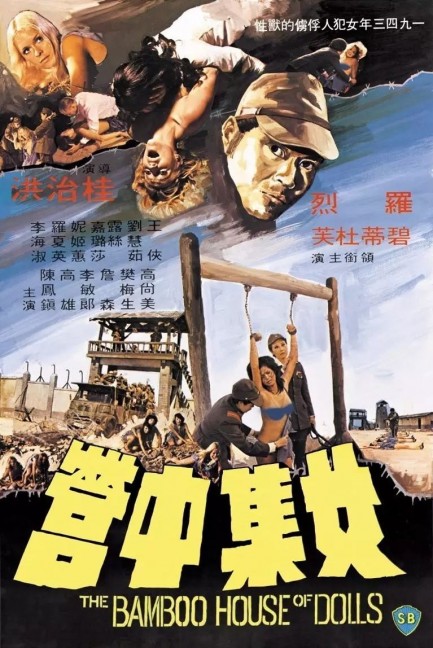 No appeal, no parole, no mercy, no hope. 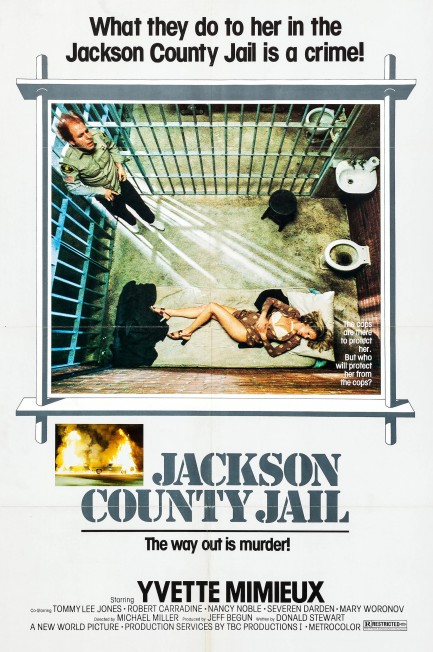
Today we continue our journey through ’70s exploitation cinema with Jackson County Jail, churned out of the grindhouse factory known as New World Pictures. Plotwise, Yvette Mimieux plays a Los Angeles advertising exec who leaves her cheating husband and finds herself at loose ends, but manages to score a job from a friend in New York City. She decides to get there by driving cross country, but passes through fictional Jackson County, located somewhere in or around Texas (a geographical fact we learn from a news broadcast that provides a Dallas Cowboys update). She's railroaded into jail and raped by the cop working the graveyard shift. Afterward, Mimieux manages to brain him with a stool and escapes with the help of hardened criminal Tommy Lee Jones, who early in his acting career (and with that monobrow of his) was already capable of making lines like this sing: “There's nothing wrong with being a crook. Everybody's crooked. I never met a straight person in my whole life. Whole goddamn country is a rip-off. And everybody in it.”
Jackson County Jail is sometimes labeled a women-in-prison flick, but it's a bit different for a generally low rent sub-genre because Mimieux was an established star, thirty-four years old with more than twenty movies behind her. The credibility she lends the film changes little about its basic purpose—titillation mixed with violence and an indictment of hick culture. Simultaneously, though, the filmmakers definitely don't go to the extremes of other women-in-prison dramas, in which we've seen women hung up by their hair. There are some viewers, we suspect, who wouldn't consider this movie a women-in-prison flick at all. We're fine leaving it out of the conversation too. The jailbound portion lasts barely twenty minutes of what is perhaps more of an outlaw movie, complete with Jones letting fly with this response to being told the police will kill him: “That don't matter. I was born dead.” Whether women-in-prison, outlaw, or counterculture, that's a damned good line. And Jackson County Jail is a pretty good movie. It premiered today in 1976
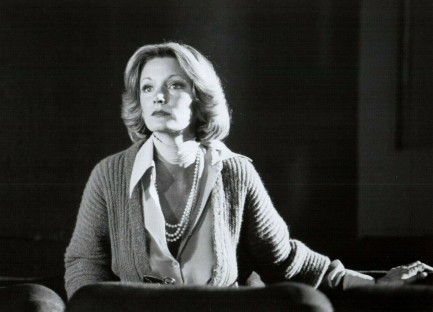 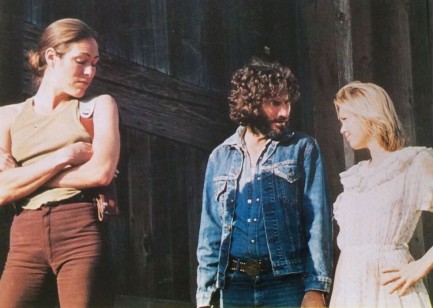 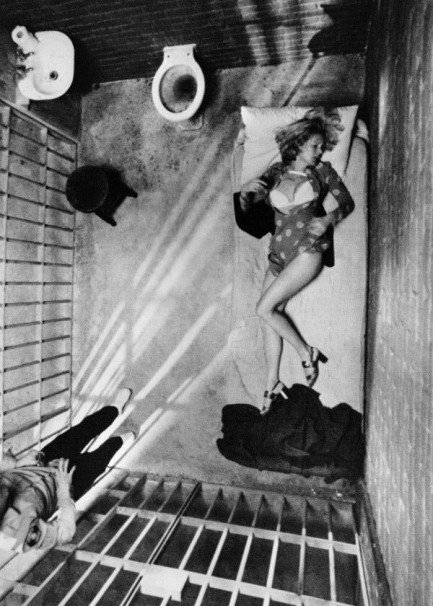 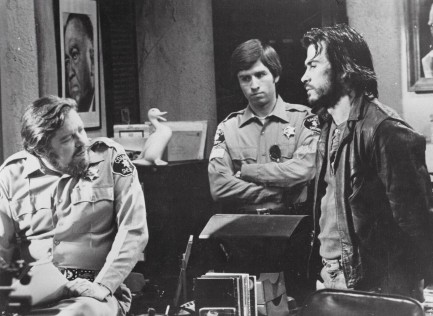 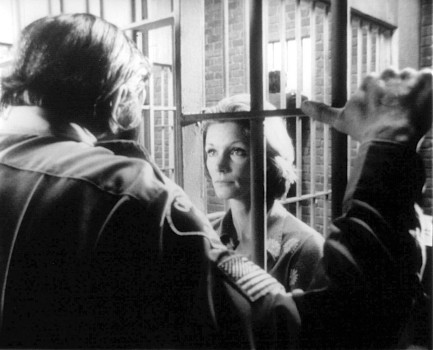 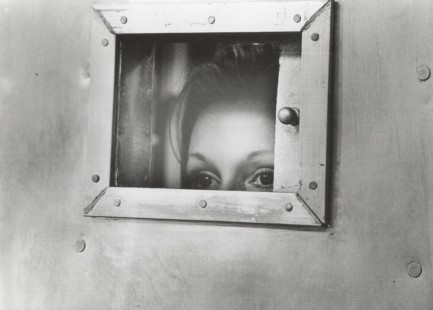   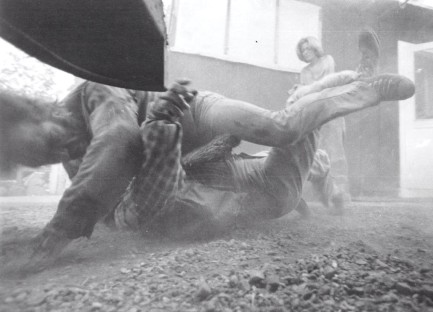 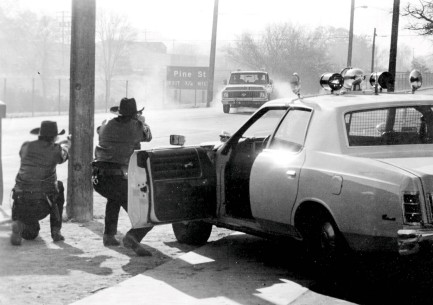 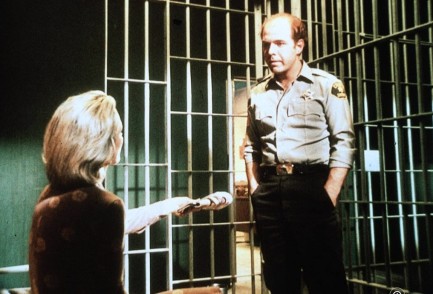
 The lawless of the jungle. 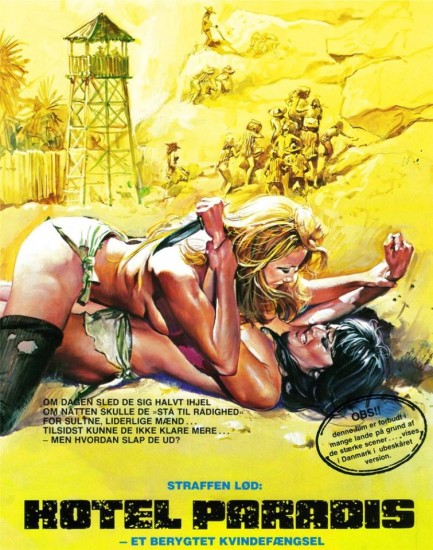
The curious and certainly never-to-reappear style of movies referred today as women-in-prison, or WIP, is a subgenre of sexploitation cinema that came about for one reason: it used settings in which women were helpless. Well, in theory. The dramatic thrust of the plots always derived from attempts to retain dignity and to escape captivity. The protagonist was usually an odd woman out—an unjustly imprisoned victim or an undercover operative—surrounded by a mix of prisoners who were hopeless, cruel, sexually predatory, and complicit, plus the abusive guards, one of whom nearly always was a sadistic woman.
Hotel Paradis stars Anthony Steffen, Ajita Wilson, and the slinky Cristina Lay, sometimes referred to as Cristina Lai. There are numerous posters for it, but we like the above Danish effort featuring a fight to the death. Its text notes: This film is banned in many countries because of its strong scenes.... it's shown in Denmark in uncut version. Indeed. Interracial lesbian sex might be to blame for the banning. There are other possible reasons too. We won't waste our time trying to figure it out. As an aside, the movie was filmed concurrently with the WIP flick Femmine infernali using the same cast, director, and sets. So consider this a write-up of that movie too, since the pair are basically identical.
Plotwise, a group of women are being transported to a jungle hellhole prison where forced labor is used to dig for emeralds. When their guards are ambushed and killed by patriot soldiers seeking to steal the emeralds to fund a nebulous revolt, the women agree to continue posing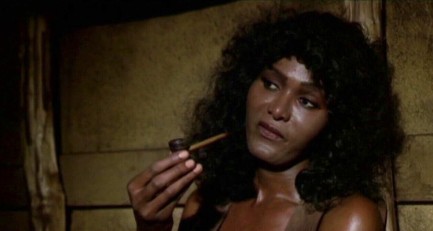  as prisoners in order to aid the infiltration of the camp. Behind bars is one inmate—Wilson—who has the shining or something, and keeps telling the others that violence, death, and freedom are coming. Also coming are WIP staples such as the evil wardenness, languorous shower scenes, whippings, baroque tortures, and sexual assault. It all ends pro forma with a climactic shootout. as prisoners in order to aid the infiltration of the camp. Behind bars is one inmate—Wilson—who has the shining or something, and keeps telling the others that violence, death, and freedom are coming. Also coming are WIP staples such as the evil wardenness, languorous shower scenes, whippings, baroque tortures, and sexual assault. It all ends pro forma with a climactic shootout.
Obviously, you have to go into these types of movies with a sense of humor if you can. When Lay first meets Wilson in the camp, she says, “My name's Maria. I'm frightened.” Why, oh why, didn't Wilson respond, “I'm Ajita. I'm a virgo”? Too bad we didn't write the script. Lay then helps herself to Wilson's pipe—which Wilson just a bit earlier had used to masturbate. If she can obtain a pipe you'd think she could get a dildo, but whatever, in prison you have to find your pleasures where you can. And in women-in-prison movies the same holds true—we thought the scene was hilarious. It was merely one of many.
It should be noted that while Wilson is the female lead, and we've shared a couple of racy images of her and highlighted her importance as a trans trailblazer, Lay is the audience draw here. She's unusually beautiful, and director Edoardo Mulargia and the movie's producers know it quite well. She gets the most loving camera work, the wettest shower scene, a nice interlude with Wilson, and goes through the entire final shootout obviously naked beneath her tattered prison tunic and with the top of it hanging wide open. It's not quite Frauen für Zellenblock 9, in which Karine Gambier and company perform their long escape sequence completely starkers, but it's notable just the same.
Hotel Paradis is obviously sexist and exploitative. As we've said before, in the same way blaxploitation movies usually show a racist power structure before the hero shatters it, sexploitation movies sometimes do the same with sexism. Sometimes. Not here. There are additional flaws. Compared to better WIP efforts it lacks the winking sense of humor, the empowerment undercurrent, and the sense of actors having fun while making something they know is ridiculous. There's a hardcore cut of this film with explicit scenes spliced in. It merely amplifies the aforementioned issues, so we suggest you avoid that version. But really, if you avoid Hotel Paradis entirely you'll probably be a better person for it. It premiered in Italy as Orinoco: Prigioniere del sesso in the autumn of 1980, and in Denmark today in 1983.  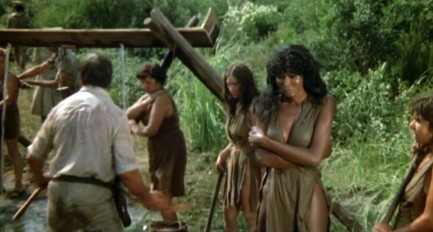   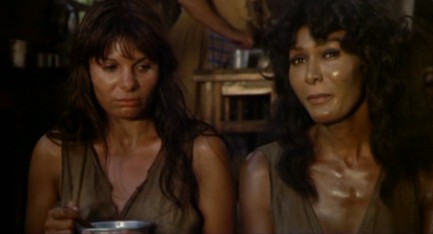 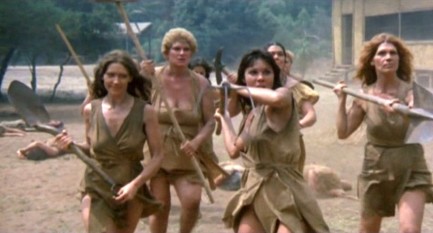   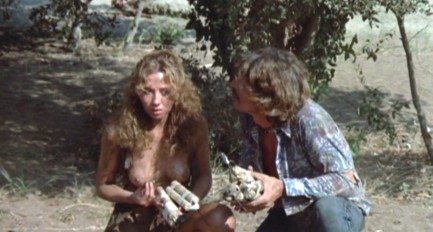
 Strindberg, Tamburi, Bisera and company wip it good in Italian sexploitation drama. 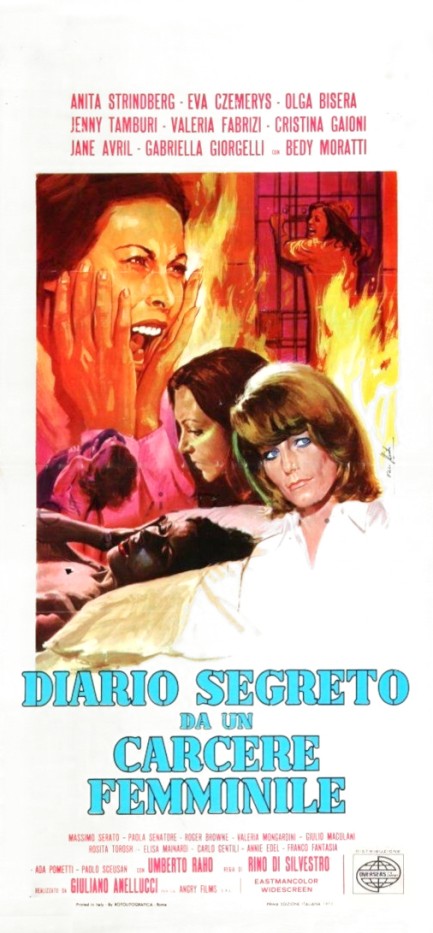
We ran across this poster for a movie we watched years ago, the exploitation drama Diario segreto da un carcere femminile, which premiered in Italy today in 1973 and is known in English as Women in Cell Block 7. Such films, for the uninitiated, are thought of by b-movie fans as belonging to a sub-genre known as women-in-prison or WiP. In honor of today's post we've gone back through the website and keyworded for them, so you can see what we've done on this unusual style of cinema by clicking “women in prison” at bottom.
The art on the poster is by Enzo Nistri, which makes it worth a share. The movie is sort of interesting too, though perhaps not exactly good. However, we've never been able to forget Olga Bisera's naughty correctional facility finger. You can see her using it in a couple of the production photos below, and following those are some of the stars, who comprise a who's-who of 1970s European exploitation cinema: Anita Strindberg, Eva Czemerys, Jenny Tamburi, Paola Senatore, Maria Pia Luzi, Gabriella Giorgelli, Olga Bisera, and Valeria Fabrizi.
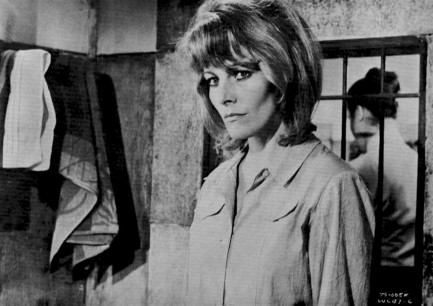 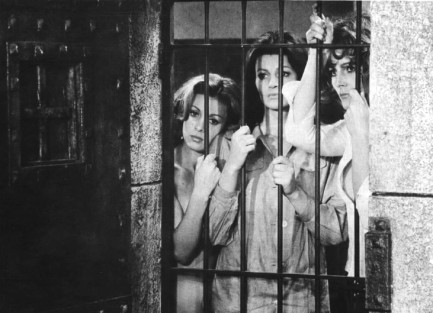 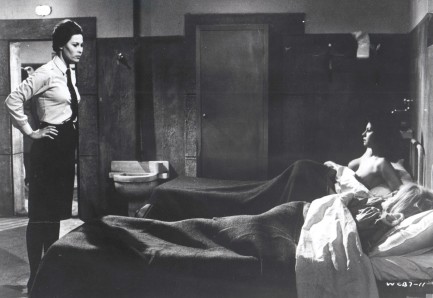 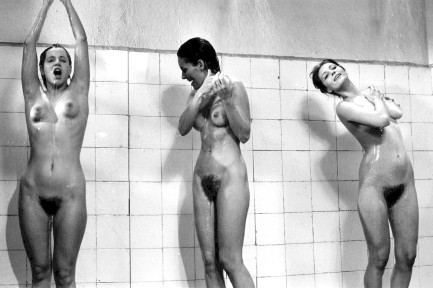 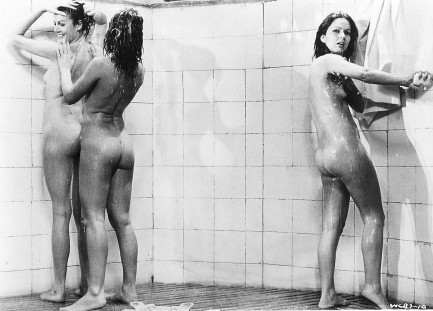  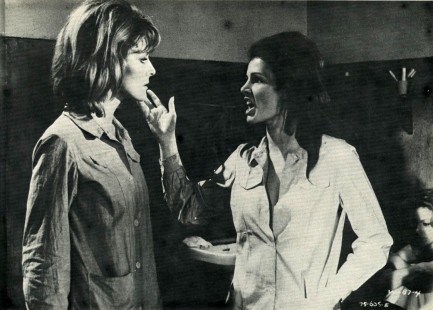 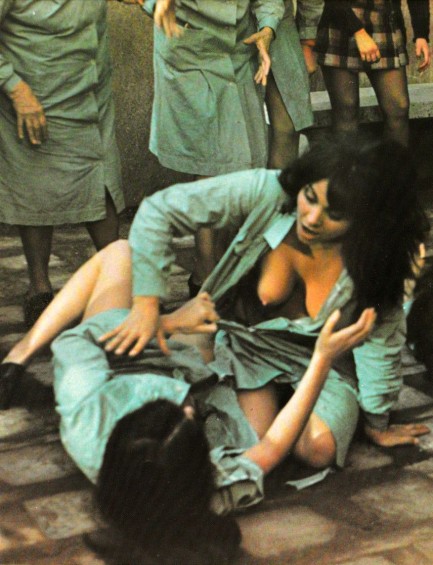 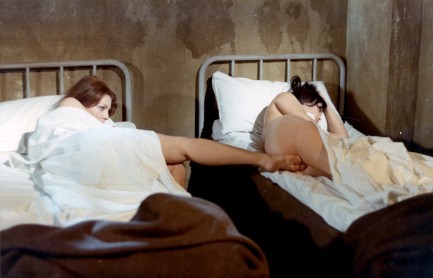 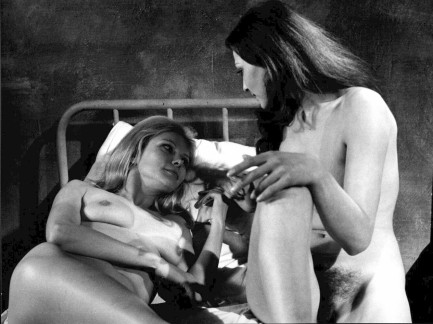 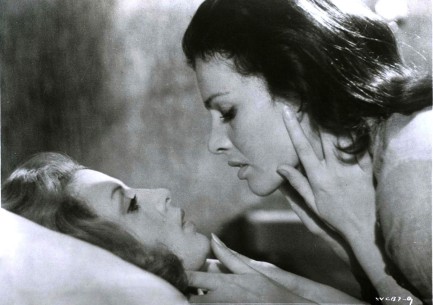 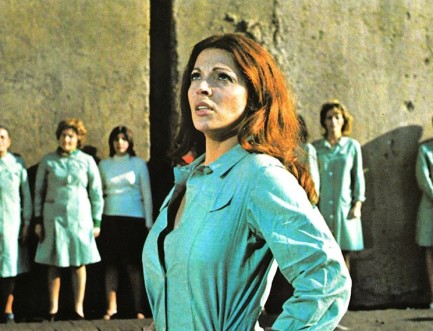 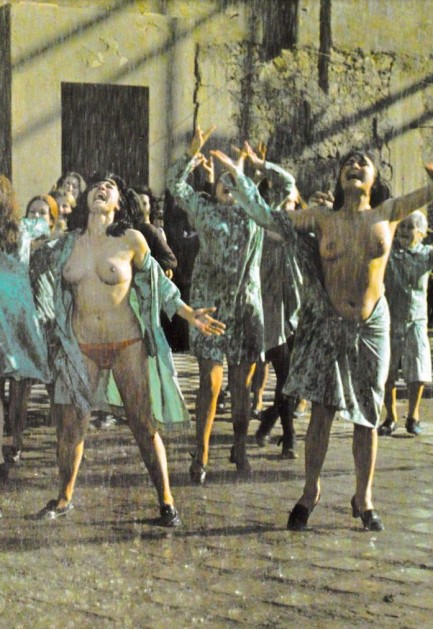 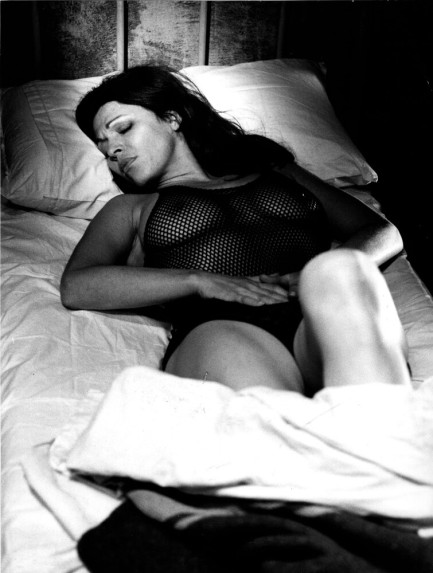 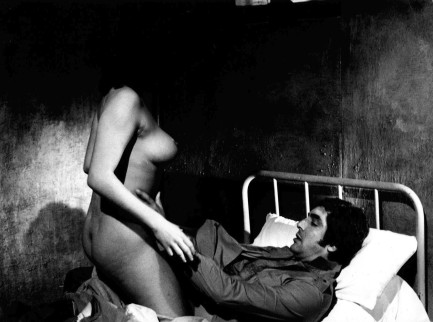 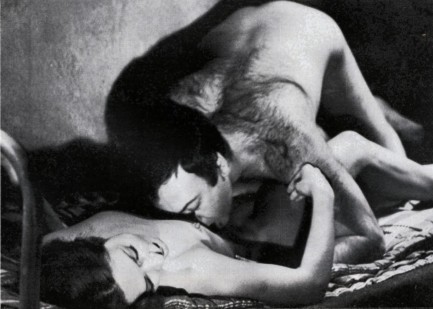 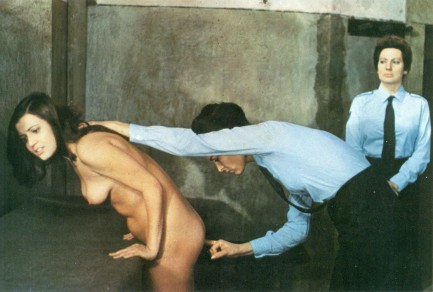 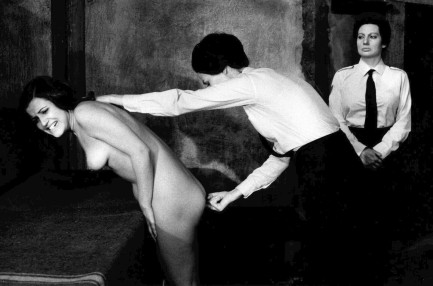   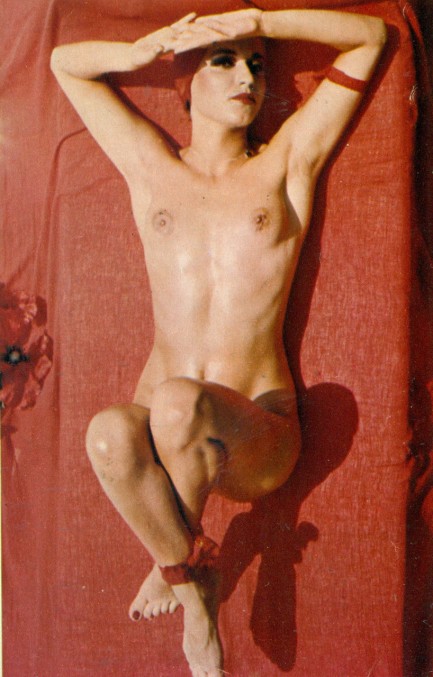 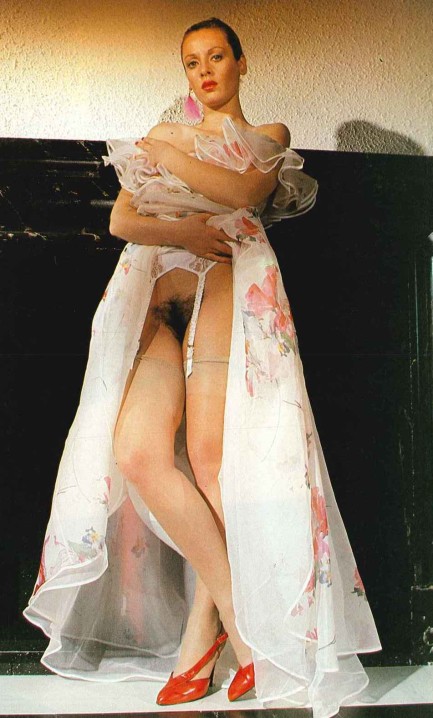 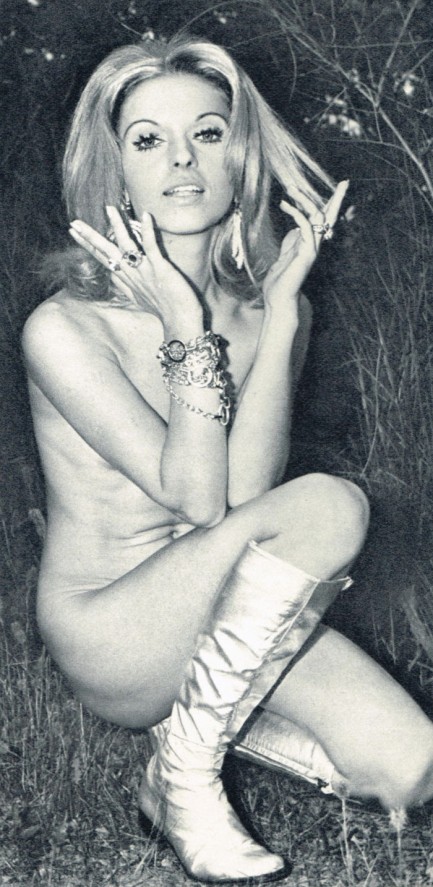 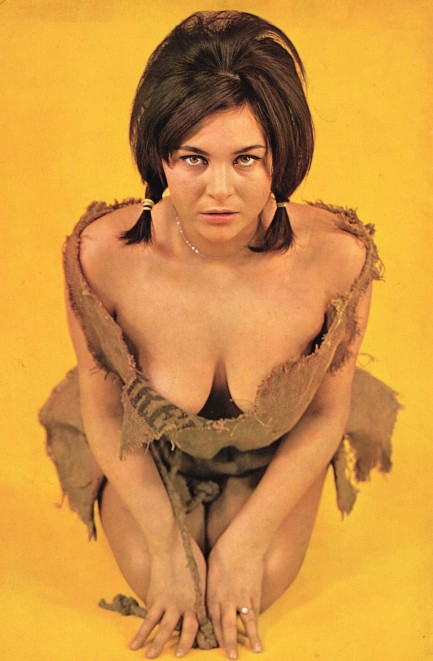 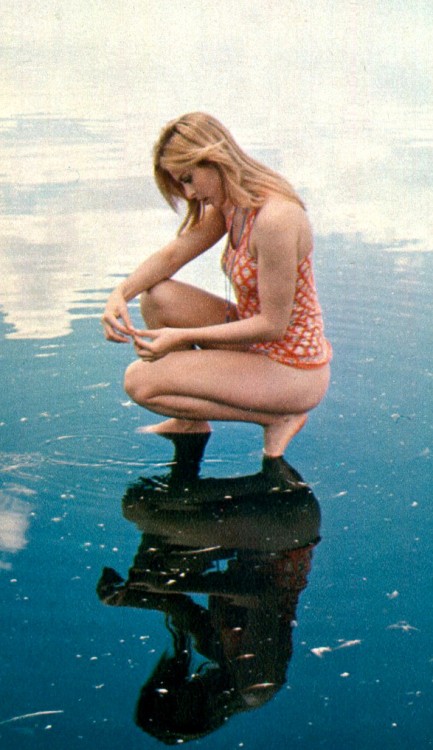
 My friend likes to knit. She really likes to knit. And you're gonna let her knit you a scarf or you're meat. 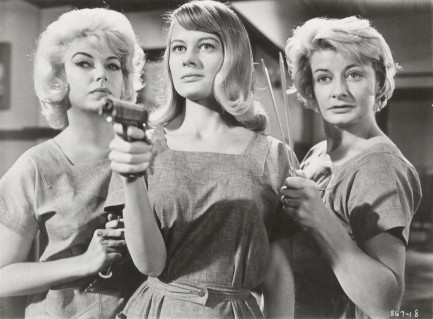
Above: a photo featuring Barbara Nichols, gun-toting Shirley Knight, and crafts-ready Constance Ford, made for the 1962 prison movie House of Women. Why does Ford have knitting needles? This probably comes as a surprise to most of you (or maybe we're underestimating knowledge of the prison system, considering one of every five prisoners on the planet are in jail in the U.S.), but in certain American jurisdictions, as well certain places internationally, very young children can live with their mothers in prison. House of Women deals with that strange reality, and makes for an unusual and interesting promo shot.
 Unlike mama's boys, they're fully able to take care of themselves. 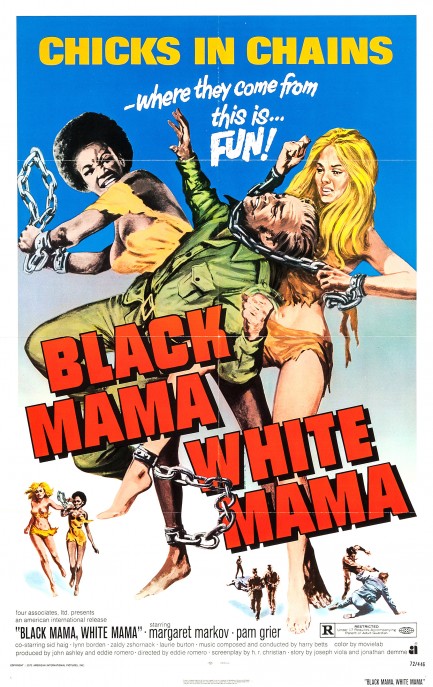
Ages ago we shared a Turkish poster for the blaxploitation flick Black Mama, White Mama, with Pam Grier and Margaret Markov. Today we're sharing the U.S. promo, as well as a nice production photo of the stars. The movie, which premiered today in 1972, was a regendering of The Defiant Ones, but done with a lot more skin and a lot less budget. Even so, it was pretty fun, as women-in-prison flicks go—if you start with modest expectations. You can see more promos from the film here.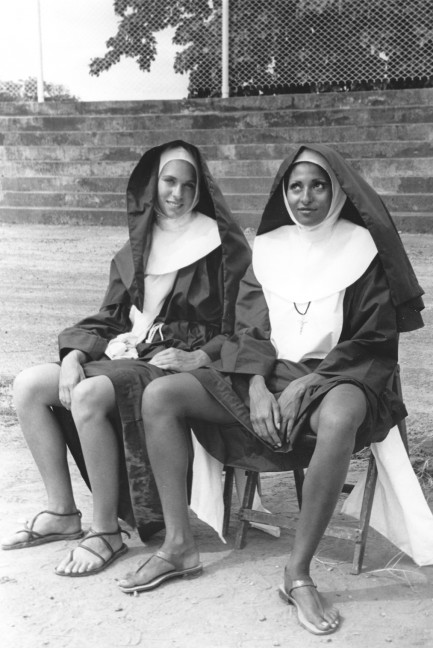
 Black don't crack a smile. 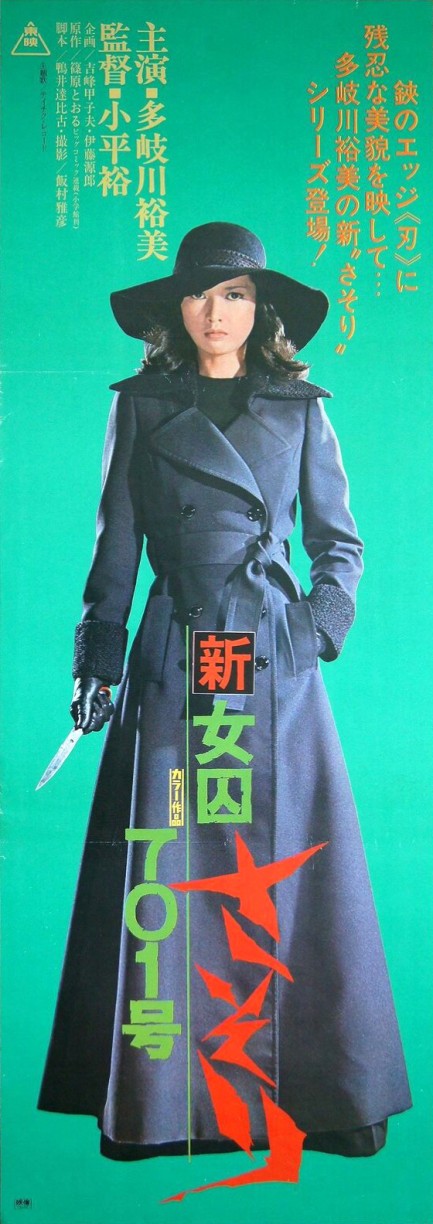
Above is a second excellent tateken poster for Shin joshuu sasori: 701-gô, known in English as New Female Prisoner Scorpion: 701, with Yumi Takigawa dressed in black from head to toe and looking ready to deal out death. These tateken style promos are rare, so we're happy to have found two. As usual, we like to share posters on a film's premiere date, and that was today in 1976.
 Machete Maidens Unleashed! is a mandatory look at grindhouse moviemaking during the untamed 1970s. 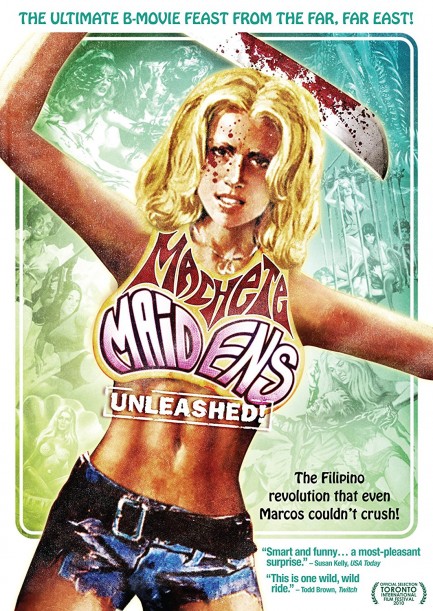
Machete Maidens Unleashed! is a film we've watched a few times, and whenever a movie racks up multiple viewings we think it needs to be highlighted. It's a fast paced documentary about the wave of low budget exploitation flicks made in the Philippines from the late ’60s through the ’70s. We weren't old enough to see any of them during the actual grindhouse era, but caught them in later years, and one reason we came up with this website was for the opportunity to riff on these types of flicks. Over the last decade-plus we've had the pleasure of writing about entertaining dreck like Savage Sisters, The Big Doll House, Night of the Cobra Woman, and Cleopatra Wong.
Built around interviews with stars such as Pam Grier, Sid Haig, Margaret Markov, Gloria Hendry, and directors/producers like Eddie Romero, Jack Hill, Joe Dante, and Roger Corman, Machete Maidens Unleashed! is an insider's look at a unique era in cinema history. It compellingly juxtaposes snippets of cinematic insanity against clips of the performers involved laughing over the craziness of it all. While the movies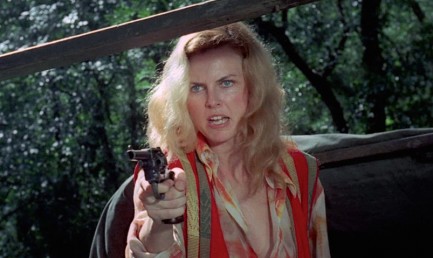 discussed often fall into the category of sexploitation, at the time they were also considered an adjunct of the women's liberation movement—a point made by a couple of the actresses interviewed. Coming out of the sexually repressive decades of the fifties and early sixties, nudity was seen as a rebuke to patriarchal control. discussed often fall into the category of sexploitation, at the time they were also considered an adjunct of the women's liberation movement—a point made by a couple of the actresses interviewed. Coming out of the sexually repressive decades of the fifties and early sixties, nudity was seen as a rebuke to patriarchal control.
Covering productions ranging from 1964's The Walls of Hell to 1979's big budget war flick Apocalypse Now, this is a wide ranging documentary, and by far the most entertaining one on the subject matter we've seen. What with our website's Philippine provenance, and with PSGP having spent a couple of years in Guatemala, another country where life was cheap but fun was unparalleled, this also hit us directly in the nostalgia gland (PSGP feels like the only reason these films weren't made in Guatemala is because everyone actually would have been murdered, instead of just thinking they would). All the interviewees seem to understand that they're from an extinct breed of very brave film performers, making entertainment for audiences ready to see absolutely anything happen. It sometimes seems that modern audiences have forgotten that the filmmaker is not the material, and the actor is not his or her character. The message comes through strongly here that movies are simply make believe. The creators may 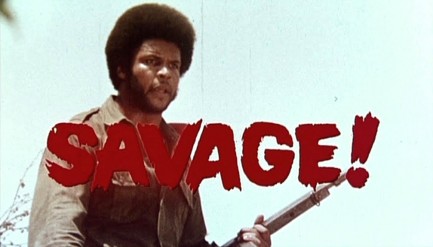 want to outrage, or teach, or push censorship envelopes, or illuminate themes that leave audiences enriched in some way, but it's still just a job they perform before going home to their real lives. We wouldn't be surprised if some of the interviewees now feel they'd been traumatized, but during this movie, at least, they shrug off the difficulties of filming—ranging from extreme weather to graphic nudity to military revolt—as obstacles true professionals must navigate. want to outrage, or teach, or push censorship envelopes, or illuminate themes that leave audiences enriched in some way, but it's still just a job they perform before going home to their real lives. We wouldn't be surprised if some of the interviewees now feel they'd been traumatized, but during this movie, at least, they shrug off the difficulties of filming—ranging from extreme weather to graphic nudity to military revolt—as obstacles true professionals must navigate.
The title cards of some of these films should be enough by themselves to intrigue you. We have a set below. We've also mixed in some screenshots. We'd love to have uploaded actual production photos, but the films are so low budget those are close to impossible to find. But why look at photos when you can watch the movies? Give it a shot. Quarts of booze are optional. Machete Maidens Unleashed! had its world premiere in Australia in the summer of 2010, and first hit U.S. shores today the same year at the Philadelphia International Film Festival. We've pointed you toward a few Philippine grindhouse flicks above, and you can read about more—there are so many, so please excuse the avalanche of links—here, here, here, here, here, here, and here. 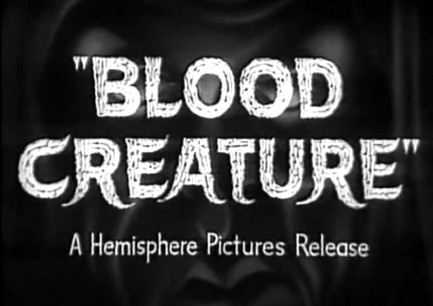 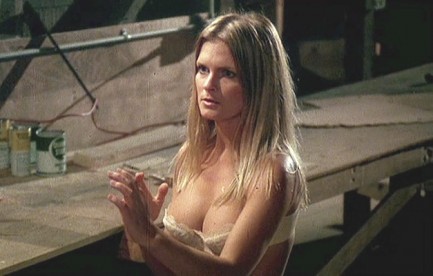  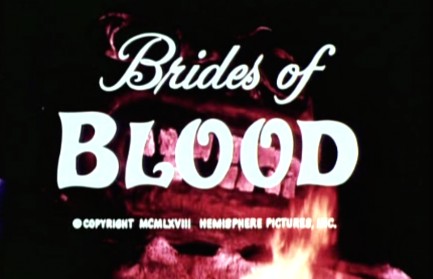  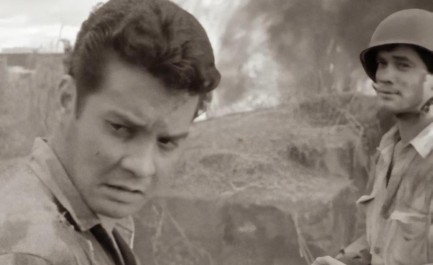 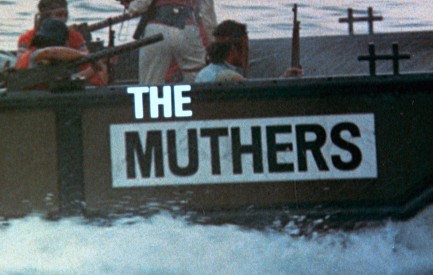 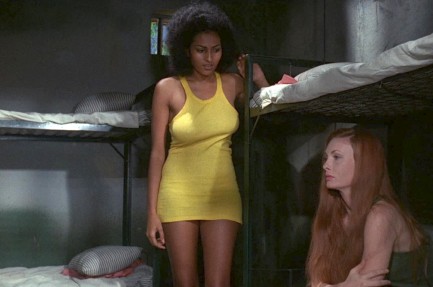 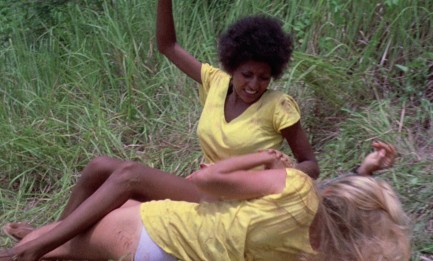 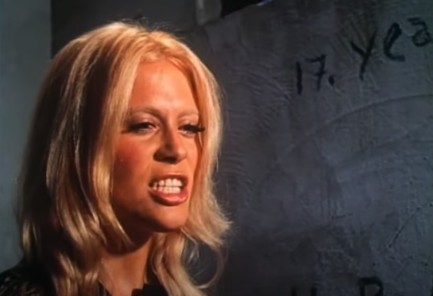 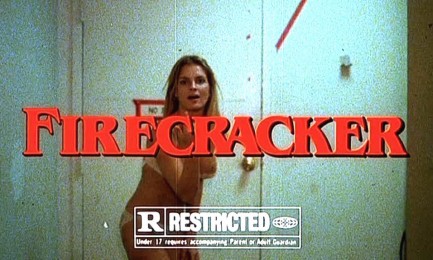 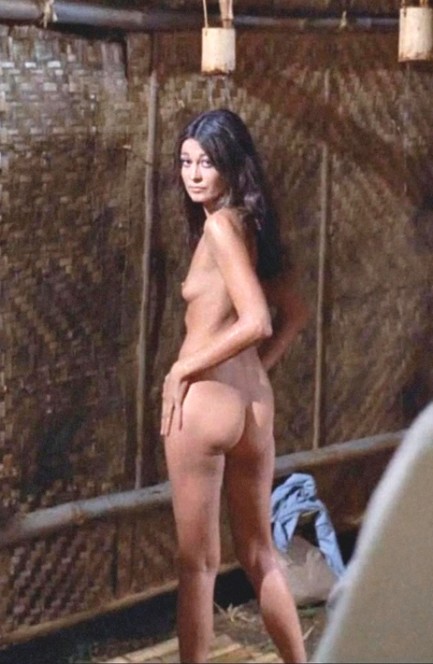 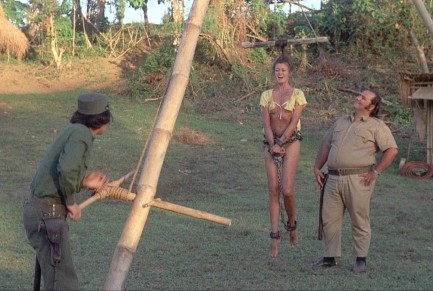 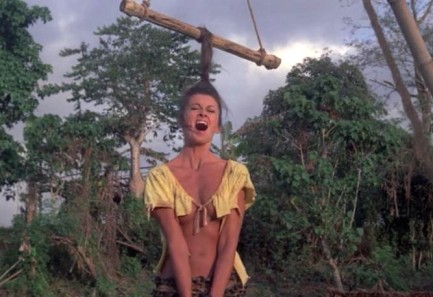   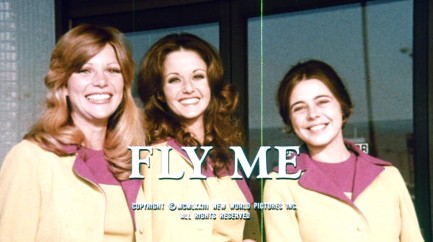 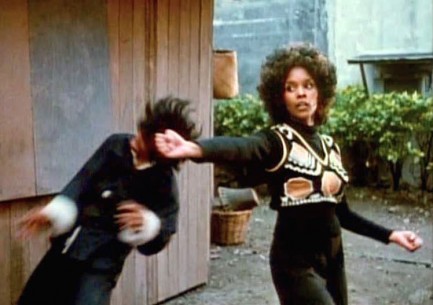 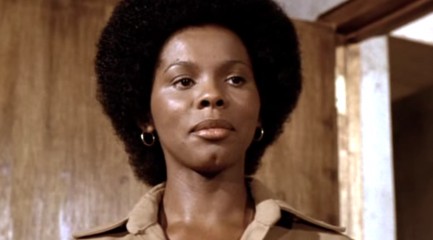  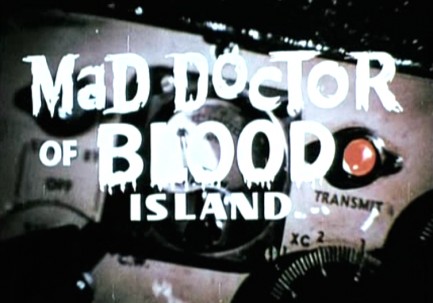 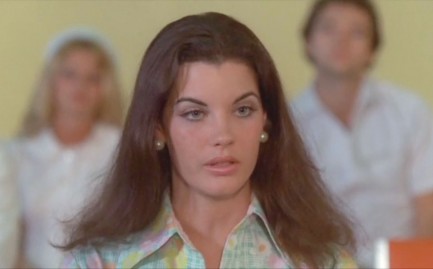  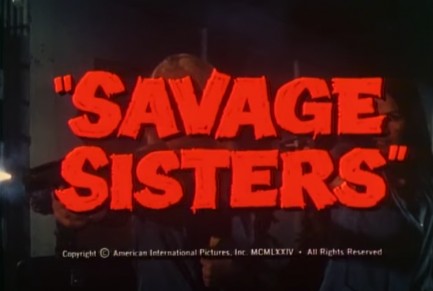   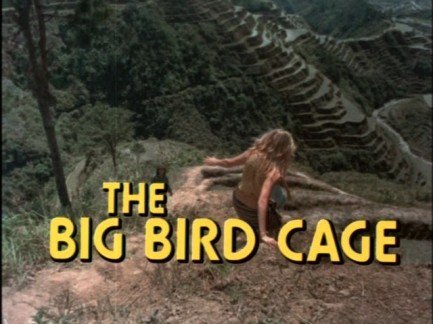 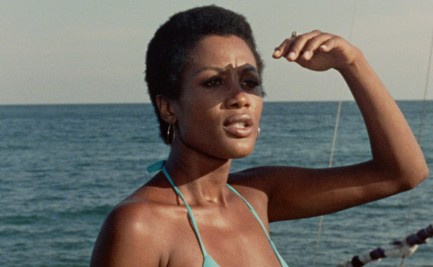 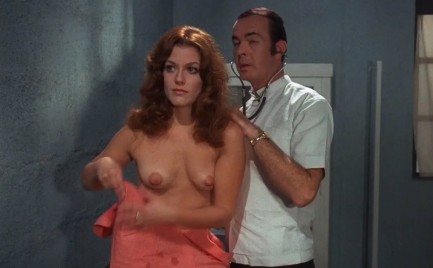  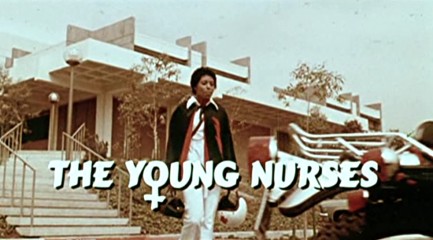 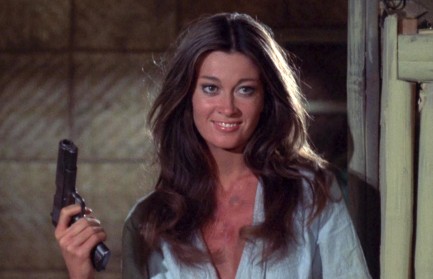
 Worse than Alcatraz. Tougher than Rikers. It's the prison island of scantily clad women. 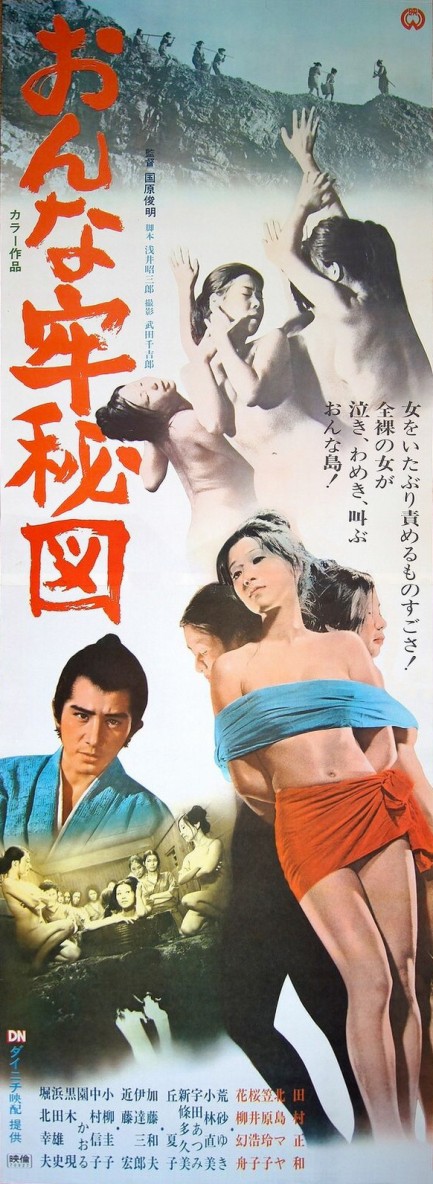
This tateken style poster was made to promote the Edo era drama Onna-ro hizu, generally known in English as Island of Horrors. The story centers around Nembutsu Island, a rocky outcropping in the Shiranui Sea used as a prison. It's inhabited by about fifteen coincidentally beautiful female captives and six samurai guards. Nobody calls the island by its real name. It's usually referred to as either the Isle of Women, which sounds kind of fun, or Decapitation Island, which does not. The new warden has been assigned there as punishment for not being tough enough in his other stops—a charge he's eager to disprove, with the help of the slap-happy guards and their baroque tortures. Additionally, the women are terrorized by Omasu the Ripper, your typical sadistic prisoner who subjugates the others in order to curry favor with her captors. And worse still, bubonic plague arrives. So, it's not overstating the situation to say that things are pretty bad on Nembutsu Island.
So how do you get the hell off that godforsaken rock? It isn't easy. The women are aware that sometimes there are pardons or paroles, and that knowledge gives them hope. But what if those lucky recipients sent from the island are not freed, but instead secretly sold into sexual slavery? Not saying that's what going on. But, you know, what if? Of course, there's no way the prisoners could ever find that out unless someone who was supposedly freed returned to the island. Omasu has her own departure plans. She tells the warden she knows where a cache of stolen ryō—gold currency—is hidden, trying to leverage it for freedom. She tries to leverage her body for that purpose too. But in the end, release from Nembutsu Island may come down to simple teamwork, and watching the inmates come to that conclusion makes for a well above average women-in-prison drama, worth a watch for the darkly beautiful cinematography and island visuals, as well as good performances from stars Maya Kitajima, Reiko Kasahara, and Yuki Aresa. Onna-ro hizu premiered in Japan today in 1970.
 They call it maximum security to scare you. I still get hair dye, cigarettes, good shoes, and pedicures, so I'm all good. 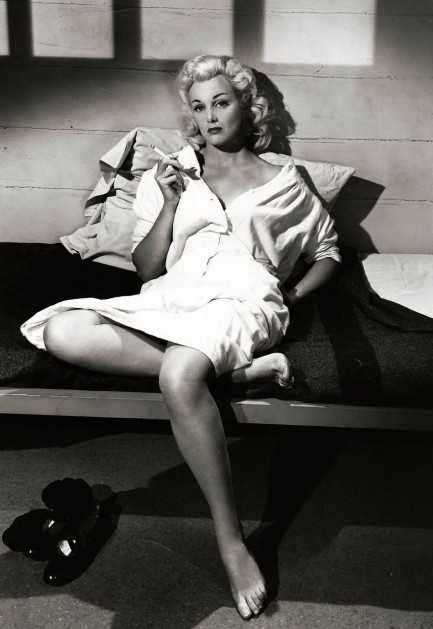
Let's circle back to Jan Sterling, shall we? As you know, she's become a favorite actress of ours, and since she has a number of excellent promo images we might as well run through a few. This one was made for her 1955 drama Women's Prison, in which her co-stars were Ida Lupino, Audrey Totter, and Cleo Moore. Think we'll be watching that? Well, with three great film noir icons in the cast, along with Sterling herself as one of the most elegant felons ever, you can bet on it.
 Hong Kong sexploitation epic isn't very good, but give it credit for ripping the scab off a historical wound. 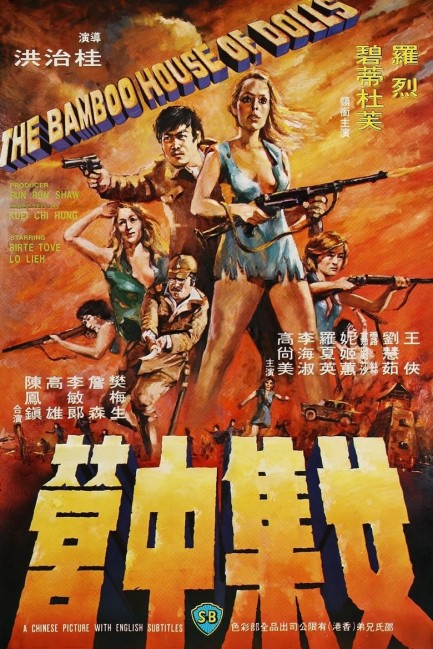
Above is a poster for the sexploitation flick Nu ji zhong ying, known in English as The Bamboo House of Dolls, and to get right to the heart of the matter, this one must have set Sino-Japanese relations back a few years. The film stars Danish actress Birte Tove as a nurse in Hong Kong who during World War II gets corralled along with her co-workers into Japanese Women's Concentration Camp 13, there to undergo various indignities before finally deciding that escape is her only option. You know the drill. Tove is the marquee attraction, but the film is largely cast with Hong Kong actresses such as Lee Hye-Sook, Hseih Wang, and others, which means that while the movie resembles entries in the women-in-prison sub-genre—with the scheming wardeness, lesbian sex, group showers, and half-cocked escapees made into examples of what not to do while in a tropical women's prison—the obvious historical context of Japan actually sexually abusing Chinese women during the war gives it an underlying grimness that's hard to ignore.
We suspect that if this were made today it would spark an international crisis, insults traded by high ranking officials on Twitter, and possibly diplomats kicked out of China and Japan, but 1970s filmmakers did not shy away from uncomfortable subject matter—and this is about as uncomfortable as it gets. That isn't the problem, though. Well, that isn't the problem for us. The objective problem is the movie is just bad. Legendary Hong Kong producers the Shaw Brothers (and by legendary we mean Run Run Shaw would be knighted in 1977) wanted to copy Jack Hill's women-in-prison movies The Big Bird Cage and The Big Doll House, but possibly overlooked the fact that setting such films in imaginary Central American hellholes as Hill did was worlds away from making the Japanese the villains in a historically laden sexual abuse epic. But what do we know? Run Run got knighted, not us. In any case, Tove's escape plan runs into some snags, but we won't reveal what those are, just in case you're in the mood for politically explosive titillation. Our advice? Give it a pass. Nu ji zhong ying premiered in Hong Kong today in 1973.  I get the feeling there's history here. Since I'm from Denmark, maybe I can I just leave? I get the feeling there's history here. Since I'm from Denmark, maybe I can I just leave?

|
 |

The headlines that mattered yesteryear.
2003—Hope Dies
Film legend Bob Hope dies of pneumonia two months after celebrating his 100th birthday. 1945—Churchill Given the Sack
In spite of admiring Winston Churchill as a great wartime leader, Britons elect
Clement Attlee the nation's new prime minister in a sweeping victory for the Labour Party over the Conservatives. 1952—Evita Peron Dies
Eva Duarte de Peron, aka Evita, wife of the president of the Argentine Republic, dies from cancer at age 33. Evita had brought the working classes into a position of political power never witnessed before, but was hated by the nation's powerful military class. She is lain to rest in Milan, Italy in a secret grave under a nun's name, but is eventually returned to Argentina for reburial beside her husband in 1974. 1943—Mussolini Calls It Quits
Italian dictator Benito Mussolini steps down as head of the armed forces and the government. It soon becomes clear that Il Duce did not relinquish power voluntarily, but was forced to resign after former Fascist colleagues turned against him. He is later installed by Germany as leader of the Italian Social Republic in the north of the country, but is killed by partisans in 1945.
|

|
|

It's easy. We have an uploader that makes it a snap. Use it to submit your art, text, header, and subhead. Your post can be funny, serious, or anything in between, as long as it's vintage pulp. You'll get a byline and experience the fleeting pride of free authorship. We'll edit your post for typos, but the rest is up to you. Click here to give us your best shot.

|
|
















 as prisoners in order to aid the infiltration of the camp. Behind bars is one inmate—Wilson—who has the shining or something, and keeps telling the others that violence, death, and freedom are coming. Also coming are WIP staples such as the evil wardenness, languorous shower scenes, whippings, baroque tortures, and sexual assault. It all ends pro forma with a climactic shootout.
as prisoners in order to aid the infiltration of the camp. Behind bars is one inmate—Wilson—who has the shining or something, and keeps telling the others that violence, death, and freedom are coming. Also coming are WIP staples such as the evil wardenness, languorous shower scenes, whippings, baroque tortures, and sexual assault. It all ends pro forma with a climactic shootout.













































 discussed often fall into the category of sexploitation, at the time they were also considered an adjunct of the women's liberation movement—a point made by a couple of the actresses interviewed. Coming out of the sexually repressive decades of the fifties and early sixties, nudity was seen as a rebuke to patriarchal control.
discussed often fall into the category of sexploitation, at the time they were also considered an adjunct of the women's liberation movement—a point made by a couple of the actresses interviewed. Coming out of the sexually repressive decades of the fifties and early sixties, nudity was seen as a rebuke to patriarchal control.
 want to outrage, or teach, or push censorship envelopes, or illuminate themes that leave audiences enriched in some way, but it's still just a job they perform before going home to their real lives. We wouldn't be surprised if some of the interviewees now feel they'd been traumatized, but during this movie, at least, they shrug off the difficulties of filming—ranging from extreme weather to graphic nudity to military revolt—as obstacles true professionals must navigate.
want to outrage, or teach, or push censorship envelopes, or illuminate themes that leave audiences enriched in some way, but it's still just a job they perform before going home to their real lives. We wouldn't be surprised if some of the interviewees now feel they'd been traumatized, but during this movie, at least, they shrug off the difficulties of filming—ranging from extreme weather to graphic nudity to military revolt—as obstacles true professionals must navigate.

































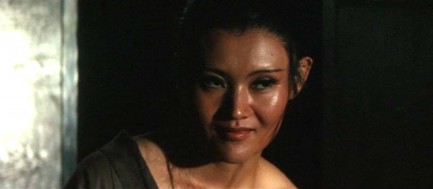
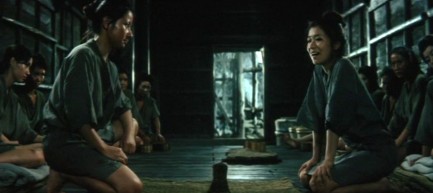
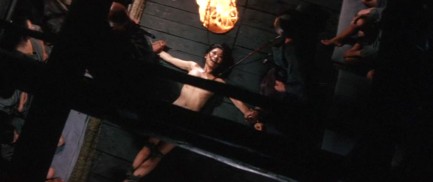
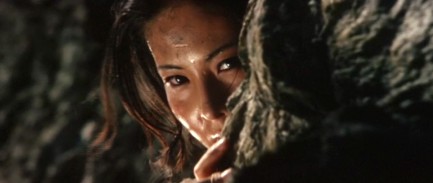
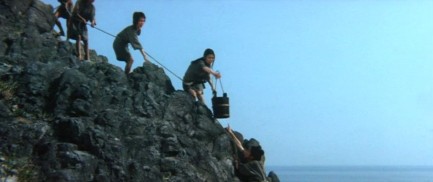
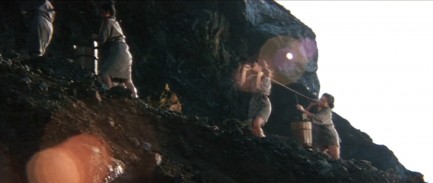
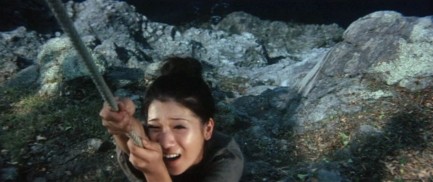
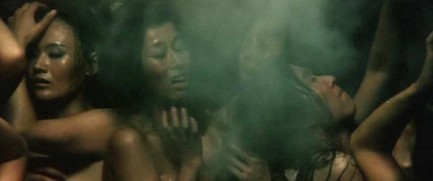
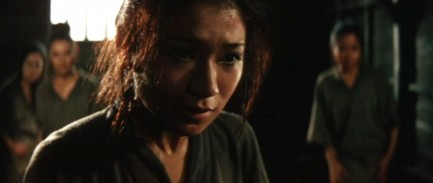
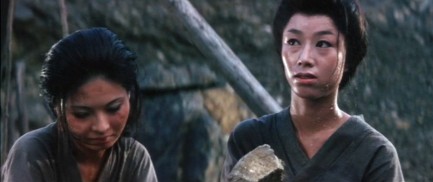





 I get the feeling there's history here. Since I'm from Denmark, maybe I can I just leave?
I get the feeling there's history here. Since I'm from Denmark, maybe I can I just leave?